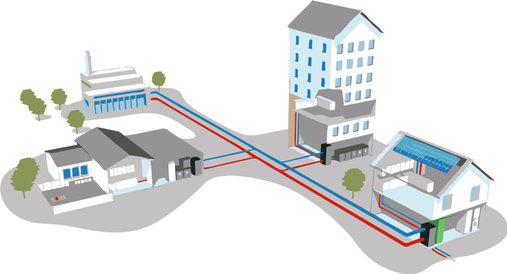District heating, also called heat networks is when a centralised boiler is used to provide heat to several buildings. This is done via the use of pre-insulated pipes to transport heat in hot water or steam form.
How Do District Heating Systems Work?
District heating systems transport heat, usually to a single building of multiple units for example a block of flats, or multiple buildings in the same area via pipework.
The heat is often generated from burning fossil fuels or biomass, but geothermal heating, heat pumps and central solar heating can also be used.
A district heating system is ideal for residential, commercial and public premises as well as mixed-use developments. Each individual building or flat can be separately measured so it makes it easy to bill for.

Advantages of District Heating
A district heating scheme creates sustainable, affordable and environmentally sound energy. District heating can provide higher efficiencies and better pollution control than localised boilers. A district heating system must be designed well, including well-insulated pipes to ensure minimal energy loss. This helps translates to more cost savings in the long term.
Additional benefits:
- Higher efficiency of delivered heat
- Continuity of service is greater than for multiple heat sources
- Supply heat to a wide variety of users
- Lower maintenance costs compared to multiple heating & distribution systems
- Reduced risk as no fossil fuel boilers in properties
For further information on our district heating services and to speak to us about upcoming projects contact us today 03301331453.
